COVID-19 Update: April 23, 2020
COVID-19 update for Thursday, April 23 as of 5:00 p.m.
Pennsylvania Update
Governor Wolf
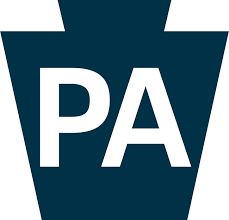 On Wednesday night Governor Wolf addressed the state about his plan to gradually reopen Pennsylvania and its economy. While the governor had previously announced some reopenings, he outlined general parameters for authorizing additional steps and further business activity.
On Wednesday night Governor Wolf addressed the state about his plan to gradually reopen Pennsylvania and its economy. While the governor had previously announced some reopenings, he outlined general parameters for authorizing additional steps and further business activity.
Reopening the state, he said, would be based on a three-phase approach and guidelines for attempting to maintain control of COVID-19: to make sure that case counts are under control and that the population of the regions identified for possible reopening have fewer than 50 cases per 100,000 residents over 14 days before people can return to work. Target dates for some reopenings may change, he said, if conditions and case counts change, but the goal is to begin on May 8.
Governor Wolf emphasized that continued social distancing and use of masks is imperative and that reopening would not be state-wide but would be on a regional basis, depending on their conditions. He will be making the decisions about regional reopenings, he said, and not local or county officials, and those decisions will be data-driven. Based on current conditions, he said, reopening is most likely to start in northern central Pennsylvania and the northwestern part of the state, but that has not yet been decided.
The governor also said the Department of Health has been talking to hospital industry representatives about resuming non-urgent elective procedures.
Learn more about Governor Wolf’s plan here.
Department of Human Services
 DHS has written to the federal Centers for Medicare & Medicaid Services to request Medicaid state plan amendments in response to the COVID-19 emergency. The amendments include suspension of co-payments for screening, diagnosis, and treatment for COVID-19; benefit flexibility to authorize the use of additional cough and cold suppressant products; suspension of prior authorization requirements for certain services and for the permitted supply of covered outpatient drugs; and more.
DHS has written to the federal Centers for Medicare & Medicaid Services to request Medicaid state plan amendments in response to the COVID-19 emergency. The amendments include suspension of co-payments for screening, diagnosis, and treatment for COVID-19; benefit flexibility to authorize the use of additional cough and cold suppressant products; suspension of prior authorization requirements for certain services and for the permitted supply of covered outpatient drugs; and more.- DHS has also written to CMS to request approval of its disaster relief state plan amendment to seek flexibilities in how the state operates its Children’s Health Insurance Program (CHIP). These flexibilities include:
- allowing enrollees to receive services beyond their certification period by extending CHIP renewal deadlines;
- temporarily delaying acting on certain changes in circumstances;
- accepting self-attestation and conduct post-enrollment verification;
- allowing individuals to provide a reasonable explanation of inconsistencies in lieu of requiring paper documentation;
- extending deadlines for submitting verification at renewal;
- temporarily suspending application of co-payments related to COVID-19 testing, screening, and treatment services; and
- temporarily delaying payment of premiums (and/or delay payment of premium balance).
- DHS has published an announcement listing the functions managed by its Office of Developmental Programs that it is suspending state-wide until further notice. Previously, these functions had been suspended for a limited period of time.
Department of Health Daily Briefing
- Secretary Levine explained the difference between confirmed cases of COVID-19 and probable cases and between confirmed deaths from COVID-19 and probable deaths from COVID-19. She said that in both situations, “probable” means the cases are under investigation.
- “Probable” classifications account for only about two percent of cases.
- Investigation of probable deaths has led the state to reduce its COVID-19 death count by 201 from yesterday.
- Secretary Levine responded to numerous questions about Governor Wolf’s plan for reopening Pennsylvania.
- When making decisions about regional reopenings the state will be using confirmed data, not probable data.
- She stressed that reopening parts of Pennsylvania will be on a regional basis and not a county-by-county basis. The state has not yet completely defined the regions it will use for this purpose.
- When determining whether regions meet the cases per 100,000 population criterion for reopening, cases in long-term-care facilities will be counted because employees enter and exit those facilities.
- The Department of Health is currently formulating its plan for future contact tracing.
- When deciding whether to reopen regions, factors such as the availability of testing, an adequate supply of hospital beds, contact tracing capabilities, and other considerations will figure in the governor’s decisions.
- Those regions will need to have enough testing capacity to accommodate a loosening of the current, strict criteria for who can be tested for COVID-19.
- Amid concern about how many COVID-19 patients end up needing dialysis, the Department of Health will be exploring the adequacy of the current supply of dialysis machines.
Department of Health
With long-term-care facilities now accounting for approximately 50 percent of COVID-19 deaths in Pennsylvania. The Department of Health’s web site now tracks cases and deaths associated with nursing homes and personal care homes. Go here and scroll about two-thirds of the way down the page.
Department of Community and Economic Development
The Department of Community and Economic Development has established a business-to-business exchange through which health care organizations seeking N95 masks, fabric and other masks, surgical and procedure masks, and thermometers can identify and do business with Pennsylvania companies that sell such supplies.
Pennsylvania Emergency Management Agency
The Wolf administration has launched an online portal for individuals, corporations, and community organizations to inform others about critical medical supplies available for donation during the COVID-19 pandemic.
Federal Update
Congress
The House has passed H.R. 266, the $384 billion COVID-19 relief/economic stimulus bill that includes $75 billion for health care providers and $25 billion for testing.
Department of Health and Human Services
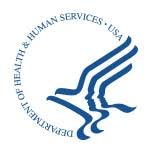 Providers that received an email from CMS on Sunday night informing them that they are in a COVID-19 hotspot were directed to register their information through https://www.teletracking.com/ by noon on Saturday, April 25. Doing so does not guarantee eligibility for a share of the $10 billion that CMS announced yesterday that it would be distributing among providers that have been hit hard by COVID-19 but failing to provide the requested information will exclude providers from eligibility. Only providers that received the Sunday night email from CMS can submit the information to the site.
Providers that received an email from CMS on Sunday night informing them that they are in a COVID-19 hotspot were directed to register their information through https://www.teletracking.com/ by noon on Saturday, April 25. Doing so does not guarantee eligibility for a share of the $10 billion that CMS announced yesterday that it would be distributing among providers that have been hit hard by COVID-19 but failing to provide the requested information will exclude providers from eligibility. Only providers that received the Sunday night email from CMS can submit the information to the site.- The Department of Health and Human Services has updated its CARES Act Provider Relief Fund web page to include new information about how it intends to distribute the final $70 billion of the $100 billion designated for hospitals in the CARES Act. It also describes its distribution methodology and timetable for distribution in this news release.
- HHS’s Office of the Inspector General has updated its FAQ addressing the application of its administrative enforcement authority to arrangements directly connected to the COVID-19 emergency.
Centers for Medicare & Medicaid Services
- CMS has issued an FAQ on utilization management flexibilities health insurers can offer to mitigate the impact of COVID-19 on health care providers.
- CMS has updated its guidance to Medicare Advantage organizations, Part D sponsors, and Medicare-Medicaid plans to further expand on a number of flexibilities they may implement during COVID-19 public health emergency to support efforts that can help curb the spread of the virus and to help ensure Medicare Advantage and Part D enrollees do not experience disruptions in care or disruptions in pharmacy and prescription drug access.
- CMS has updated its guidance for infection control and prevention of COVID-19 for home health agencies and religious non-medical health care institutions that make home health visits, including those that enter non-Medicare-licensed facilities.
- CMS has established a new toolkit for states to help accelerate adoption of broader telehealth coverage policies in the Medicaid and Children’s Health Insurance Programs (CHIP) during the COVID-19 pandemic.
- CMS has extended the comment period for stakeholder response to its proposed rule titled “Medicare Program: Comprehensive Care for Joint Replacement Model Three-Year Extension and Changes to Episode Definition and Pricing,” which was published on February 24. The comment deadline, originally April 24, is now June 23.
Centers for Disease Control and Prevention
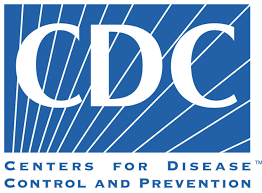 The CDC has published information about how health care providers can optimize their supply of personal protective equipment.
The CDC has published information about how health care providers can optimize their supply of personal protective equipment.- The CDC has posted strategies or options to optimize supplies of disposable N95 masks in health care settings when there is a limited supply.
- The CDC has updated its guidance on the decontamination of filtering facepiece respirators using contingency and crisis capacity strategies.
- The CDC has published information about contact tracing and COVID-19.
- The CDC has posted a tool for individuals to assess and manage their risk based on different exposures to COVID-19.
- The CDC has updated its FAQ on children and COVID-19.
- The CDC has published information for health care providers about pregnant women and COVID-19.
Food and Drug Administration
- The FDA has announced an enforcement policy for the use of non-invasive fetal and maternal monitoring devices to support patient monitoring during the COVID-19 crisis to expand the availability and capabilities of those devices.
- The FDA has issued an emergency use authorizations (EUAs) for monitors intended for use in hospitals to monitor adult, pediatric, and neonate patients having or suspected of having COVID-19.
- The FDA has issued EUAs for two new tests (here and here) to detect COVID-19.
- The FDA has issued guidance on its temporary policy regarding accredited third-party certification program on-site observation and certification requirements during the COVID-19 emergency.
National Governors Association
- The National Governors Association has published “Roadmap to Recovery: A Public Health Guide for Governors.” The 38-page document presents the organization’s plan for reopening states in a manner that preserves public safety and confidence.
Resources to Consult
Pennsylvania Department of Human Services
Pennsylvania Department of Health
Centers for Disease Control and Prevention
(To receive this daily update directly, sign up for our mailing list at info@pasafetynet.org.)
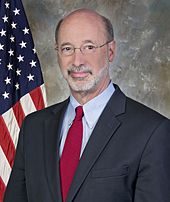 Governor Wolf
Governor Wolf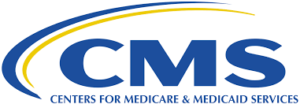 Centers for Medicare & Medicaid Services
Centers for Medicare & Medicaid Services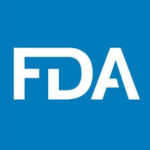 The FDA will participate in a
The FDA will participate in a  Today SNAP wrote to members of Pennsylvania’s congressional delegation to ask them to support new COVID-19 and economic relief legislation that was expected to include $75 billion for hospitals. See SNAP’s letter
Today SNAP wrote to members of Pennsylvania’s congressional delegation to ask them to support new COVID-19 and economic relief legislation that was expected to include $75 billion for hospitals. See SNAP’s letter  The Department of Health new daily case counts are now the sum of two figures: “confirmed” cases that have been determined by testing plus cases that have been ruled “probable” because of an individual’s symptoms and recent contact with someone who has a confirmed case of COVID-19.
The Department of Health new daily case counts are now the sum of two figures: “confirmed” cases that have been determined by testing plus cases that have been ruled “probable” because of an individual’s symptoms and recent contact with someone who has a confirmed case of COVID-19. Congressional leaders and the Trump administration have agreed to provide $75 billion for hospitals as part of a $484 billion COVID-19 and economic relief package. This $75 billion would be addition to the money from the CARES Act and would have the same parameters as the CARES Act money.
Congressional leaders and the Trump administration have agreed to provide $75 billion for hospitals as part of a $484 billion COVID-19 and economic relief package. This $75 billion would be addition to the money from the CARES Act and would have the same parameters as the CARES Act money.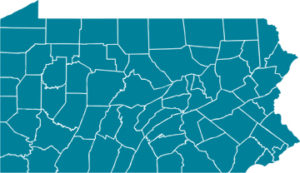 Governor Wolf today announced that he was extending his stay-at-home order through May 8, at which time the state may, depending on the status of spread of COVID-19, begin permitting some industries and businesses to resume operations while still observing social distancing guidelines. Pennsylvania’s liquor stores have begun curbside pick-up and online auto sales will be permitted to resume, with notaries doing their work online. Construction projects would be permitted to resume on May 8. The administration is exploring permitting some retailers to engage in curbside pick-ups but the governor acknowledged that this presented different challenges in different places. He said the reopening of the state’s economy would be regional rather than state-wide, that some things that may be realistic in Cameron County may not be feasible in Philadelphia, and that all reopening efforts would be contingent on the progress of the COVID-19 pandemic between now and May 8. He did not speak about anything involving health care other than to note that social distancing appears to have been effective in preventing the health care system from becoming overwhelmed at the height of the crisis.
Governor Wolf today announced that he was extending his stay-at-home order through May 8, at which time the state may, depending on the status of spread of COVID-19, begin permitting some industries and businesses to resume operations while still observing social distancing guidelines. Pennsylvania’s liquor stores have begun curbside pick-up and online auto sales will be permitted to resume, with notaries doing their work online. Construction projects would be permitted to resume on May 8. The administration is exploring permitting some retailers to engage in curbside pick-ups but the governor acknowledged that this presented different challenges in different places. He said the reopening of the state’s economy would be regional rather than state-wide, that some things that may be realistic in Cameron County may not be feasible in Philadelphia, and that all reopening efforts would be contingent on the progress of the COVID-19 pandemic between now and May 8. He did not speak about anything involving health care other than to note that social distancing appears to have been effective in preventing the health care system from becoming overwhelmed at the height of the crisis. The department has issued an
The department has issued an 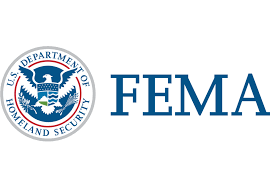 FEMA has published a
FEMA has published a 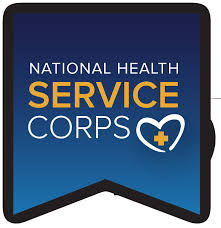 National Health Services Corps
National Health Services Corps Governor Wolf
Governor Wolf Yesterday President Trump announced the creation of the
Yesterday President Trump announced the creation of the  Department of State
Department of State CMS has posted a
CMS has posted a  The DEA has published a letter that grants to the satellite hospitals and clinics of DEA-registered hospitals, under certain conditions, the
The DEA has published a letter that grants to the satellite hospitals and clinics of DEA-registered hospitals, under certain conditions, the  Over the weekend, House Speaker Michael Turzai changed the House of Representatives’ session schedule to hold a non-voting session day today and a voting session day tomorrow in an effort to enable Republicans to move forward with relief efforts for businesses related to the COVID-19 crisis. There has been speculation that if a quorum is present the Speaker may seek to suspend temporary House rules permitting remote voting to ease the passage of Republican-sponsored relief measures for businesses affected by limits on their ability to operate during the COVID-19 emergency. The House also has canceled its session for Wednesday and Thursday of this week.
Over the weekend, House Speaker Michael Turzai changed the House of Representatives’ session schedule to hold a non-voting session day today and a voting session day tomorrow in an effort to enable Republicans to move forward with relief efforts for businesses related to the COVID-19 crisis. There has been speculation that if a quorum is present the Speaker may seek to suspend temporary House rules permitting remote voting to ease the passage of Republican-sponsored relief measures for businesses affected by limits on their ability to operate during the COVID-19 emergency. The House also has canceled its session for Wednesday and Thursday of this week. Children’s Health Insurance Program
Children’s Health Insurance Program MACPAC has written to CMS administrator Seema Verma to express its concern that the manner in which CMS has chosen to distribute $30 billion of the $100 billion designated in the CARES Act for hospitals and health care providers “…does not account for the real and pressing concerns of safety-net providers that are on the frontlines of serving the nation’s poorest and most vulnerable people…” MACPAC also asks Ms. Verma to “…ensure that safety-net providers, including hospitals considered deemed disproportionate share hospitals (DSH) for the purpose of Medicaid payment…children’s hospitals, and other providers serving Medicaid and other low-income patients have access to federal funds made available through the CARES Act without delay.” See the MACPAC letter
MACPAC has written to CMS administrator Seema Verma to express its concern that the manner in which CMS has chosen to distribute $30 billion of the $100 billion designated in the CARES Act for hospitals and health care providers “…does not account for the real and pressing concerns of safety-net providers that are on the frontlines of serving the nation’s poorest and most vulnerable people…” MACPAC also asks Ms. Verma to “…ensure that safety-net providers, including hospitals considered deemed disproportionate share hospitals (DSH) for the purpose of Medicaid payment…children’s hospitals, and other providers serving Medicaid and other low-income patients have access to federal funds made available through the CARES Act without delay.” See the MACPAC letter